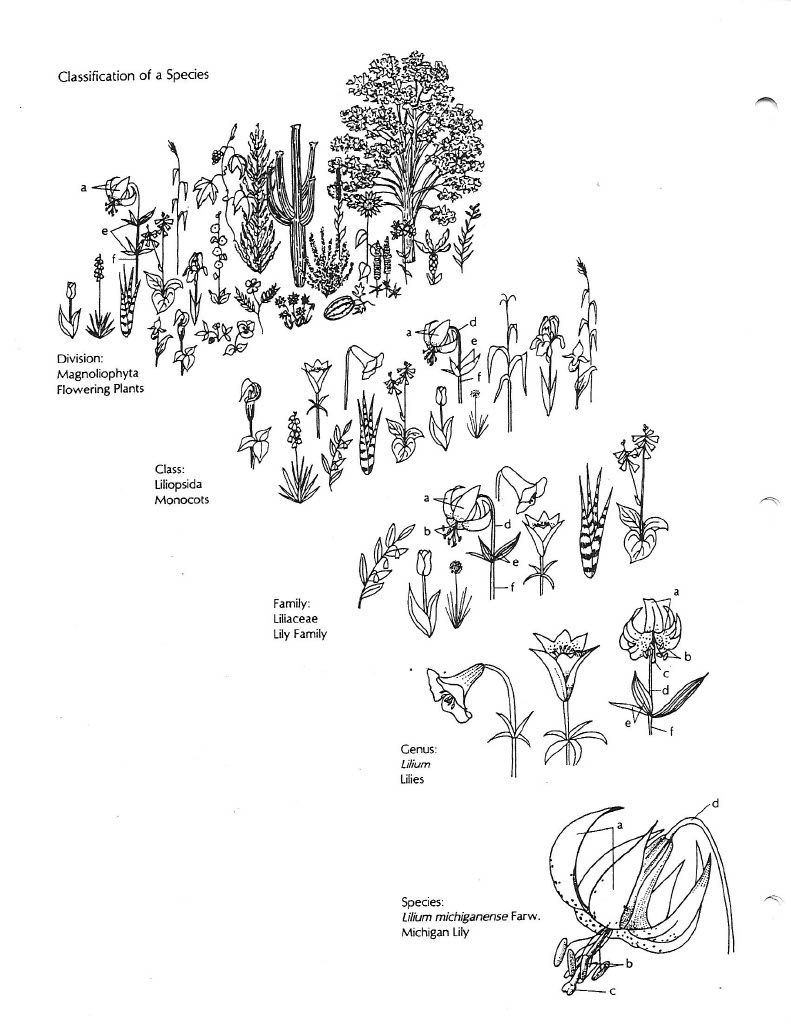Plant Relationships
What is a Plant?
According to Webster: Any of various photosynthetic (synthesize energy from the sun), eucaryotic (clearly identified nuclei in the cell), multcellular organisms of the kingdom of Plantae characteristically producing embryos, containing chloroplasts, having cellulose cell walls, and lacking the power of locomotion. Exceptions: algae are single cell plants.
Ways to sort plants include uses (flowers, fruits, vegetables, turf), length of life cycle (annuals and perrenials) and by plant categories such as flower, fruit and seed structure. There are two plant categories: Angiosperms are plants with flowers while gymnosperms have no flowers (such as a pine tree or fern).
Modern plant classification is based upon the work of Linneaus (1700s) who classified plants by their reproductive systems. His name is common in the plant world such as the Mo Botanical Garden Name for the Linnean House, where the Camellias grow. The system is still in use. Plants have botanical names (Genus and species) as well as common names. The genus and species gives you much more information about the plant and are used by professionals and nurseries. When you go to a nursery to look for a plant, you may well find the nurseries arranged alphabetically by genus and species. For example roses and strawberries are both part of the Family Rosaceae!
This modern classification is based upon a Taxonomy (the branch of science concerned with classification). Taxonomy goes from general to specific. Each plant has a unique taxonomy which includes its Kingdom (Plantaea), Division, Class, Order, Family, Genus and Species. As a short hand, the genus and species is enough to remember the key characteristics of the plant. Taxonomic placement is based upon features that make plants more alike than other plants.

Example (above): Family Magnoliaceae have simple leaves which alternate, flower but not catkins, flower with a calyx, 6 or more sepals that are imbricate, 2 or more distinct carpals and ovules encased in an ovary. So what does this mean? Simple leaves have no lobes or notches. Think Magnolia (if you haven’t already guessed) vs an oak leaf.


Alternate leaves “climb” the stem each one a bit higher than another as opposed to opposite leaves such as in the pictures of the Magnolia and the Dogwood.


Flowers but not catkins. Flowers contain petals and both male and female organs. Catkins are long, thin clusters of tiny, petalless flowers growing on willows, birches, oaks, poplars, and certain other trees. The flowers on a catkin are either all male or all female.

Flower with a calyx (the sepals of a flower, typically forming a whorl that encloses the petals and forms a protective layer around a flower in bud such as a magnolia flower or lily bud.) Sepals are imbricate ((overlapping in the bud) and number at least 6. (Compare the Magnolia bud with the strawberry flower).


Two or more distinct carpels (The carpel in plants is the last whorl of the flower– note the magnolia bud and the rose bud).

Ovules enclosed in an ovary as shown in the diagram.

In the Taxonomy, Family is divided then into Genus. In this example the Genus, or branch of the Family, includes those plants in the Family with similar flowers, roots, stems, buds and leaves. For this example we will use the Genus Lilium, common name Lilies. The Genus Lilium is composed of about 100 species that are erect perennials with usually narrow leaves and flowers characterized by six petal-like segments (three petals in addition to three sepals) which may form the shape of a trumpet. Sepals differ from petals: Sepals refer to each of the parts of the calyx of a flower, enclosing the petals and typically green and leaf-like while petals refer to each of the segments of the corolla of a flower, which are modified leaves and are typically coloured.

Now to differentiate the 100 species in the genus, there is a species name. Daylilies are subgenus Hemerocallis and species fulva. Note that the genus name is always capitalized while the species name is not. Then there are varietal names such as the red daylily pictured Hemerocallis fulva, var. rosea Pastelrose.

In addition, there may be a cultivar in the name. It will be included in single quotes such as Cornus florida forma rubra ‘Cherokee Chief’. Cornus florida is a native dogwood, forma rubra means it is a red dogwood and Cherokee Chief is a specific form of the red dogwood.

So just the name tells you a great deal about the plant!



